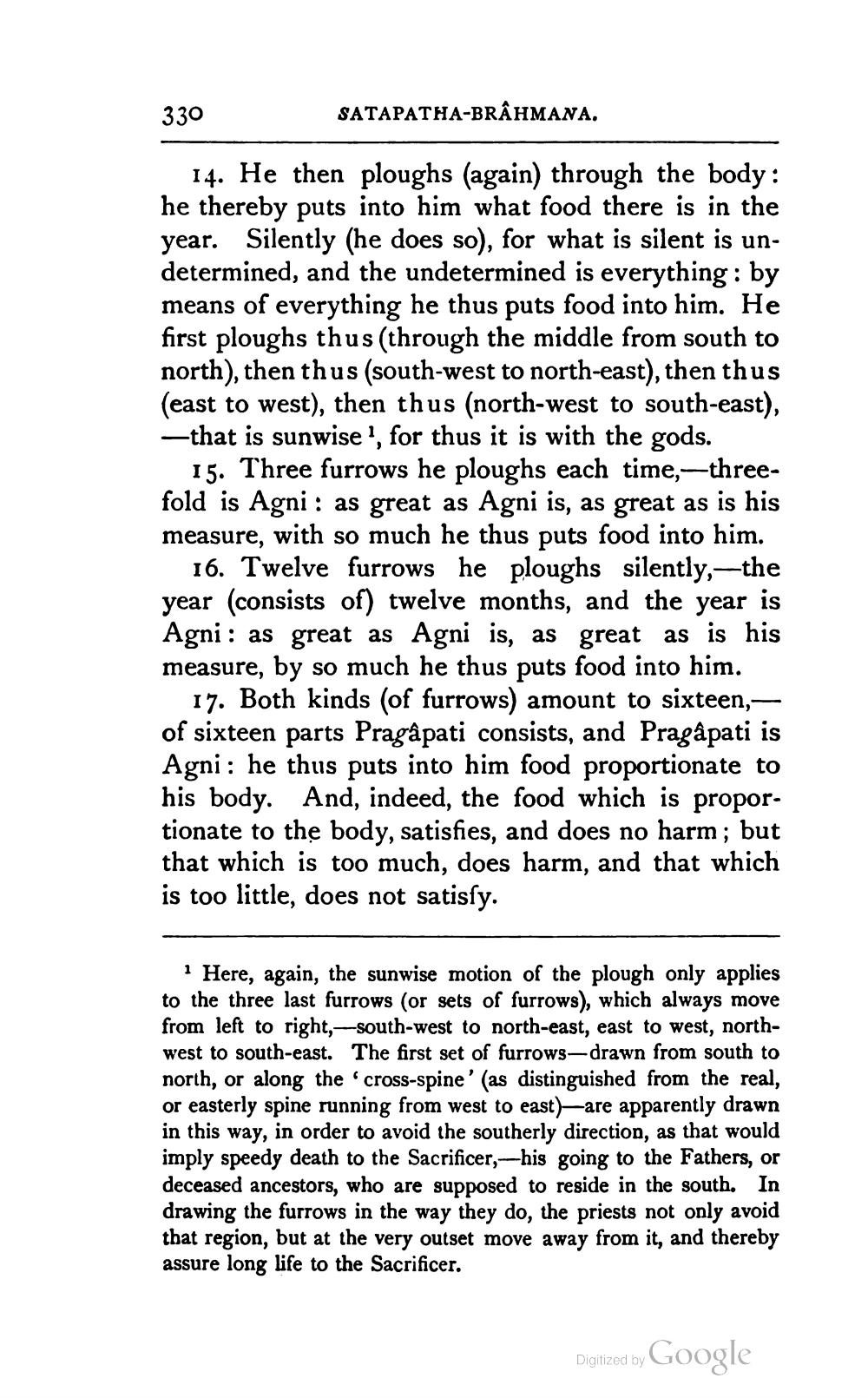________________
330
SATAPATHA-BRAHMANA.
14. He then ploughs (again) through the body: he thereby puts into him what food there is in the year. Silently (he does so), for what is silent is undetermined, and the undetermined is everything: by means of everything he thus puts food into him. He first ploughs thus (through the middle from south to north), then thus (south-west to north-east), then thus (east to west), then thus (north-west to south-east), -that is sunwise', for thus it is with the gods.
15. Three furrows he ploughs each time,-threefold is Agni: as great as Agni is, as great as is his measure, with so much he thus puts food into him.
16. Twelve furrows he ploughs silently, the year (consists of) twelve months, and the year is Agni as great as Agni is, as great as is his measure, by so much he thus puts food into him.
17. Both kinds (of furrows) amount to sixteen,— of sixteen parts Pragâpati consists, and Pragâpati is Agni: he thus puts into him food proportionate to his body. And, indeed, the food which is proportionate to the body, satisfies, and does no harm; but that which is too much, does harm, and that which is too little, does not satisfy.
1 Here, again, the sunwise motion of the plough only applies to the three last furrows (or sets of furrows), which always move from left to right,-south-west to north-east, east to west, northwest to south-east. The first set of furrows-drawn from south to north, or along the cross-spine' (as distinguished from the real, or easterly spine running from west to east)-are apparently drawn in this way, in order to avoid the southerly direction, as that would imply speedy death to the Sacrificer,-his going to the Fathers, or deceased ancestors, who are supposed to reside in the south. In drawing the furrows in the way they do, the priests not only avoid that region, but at the very outset move away from it, and thereby assure long life to the Sacrificer.
Digitized by Google




